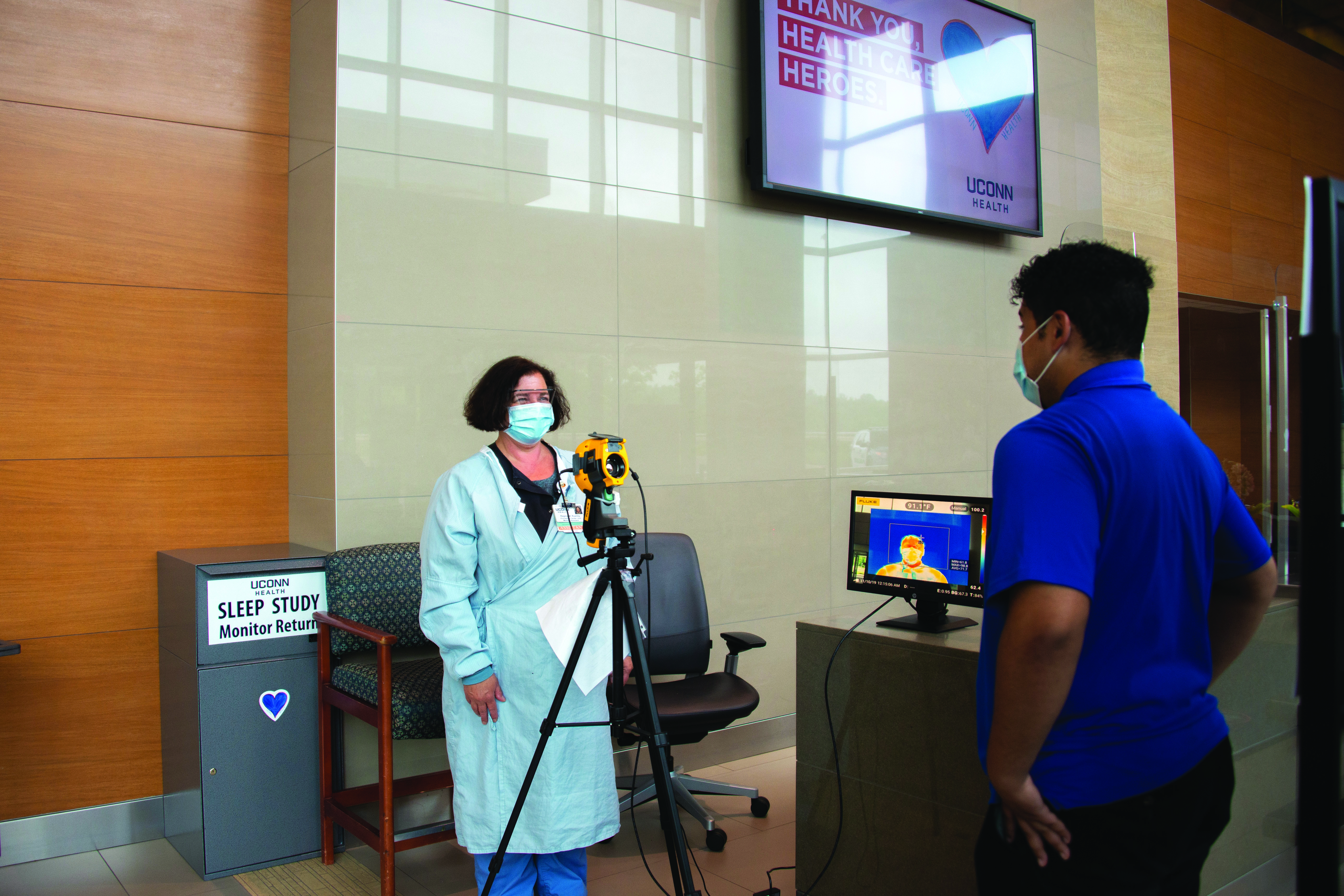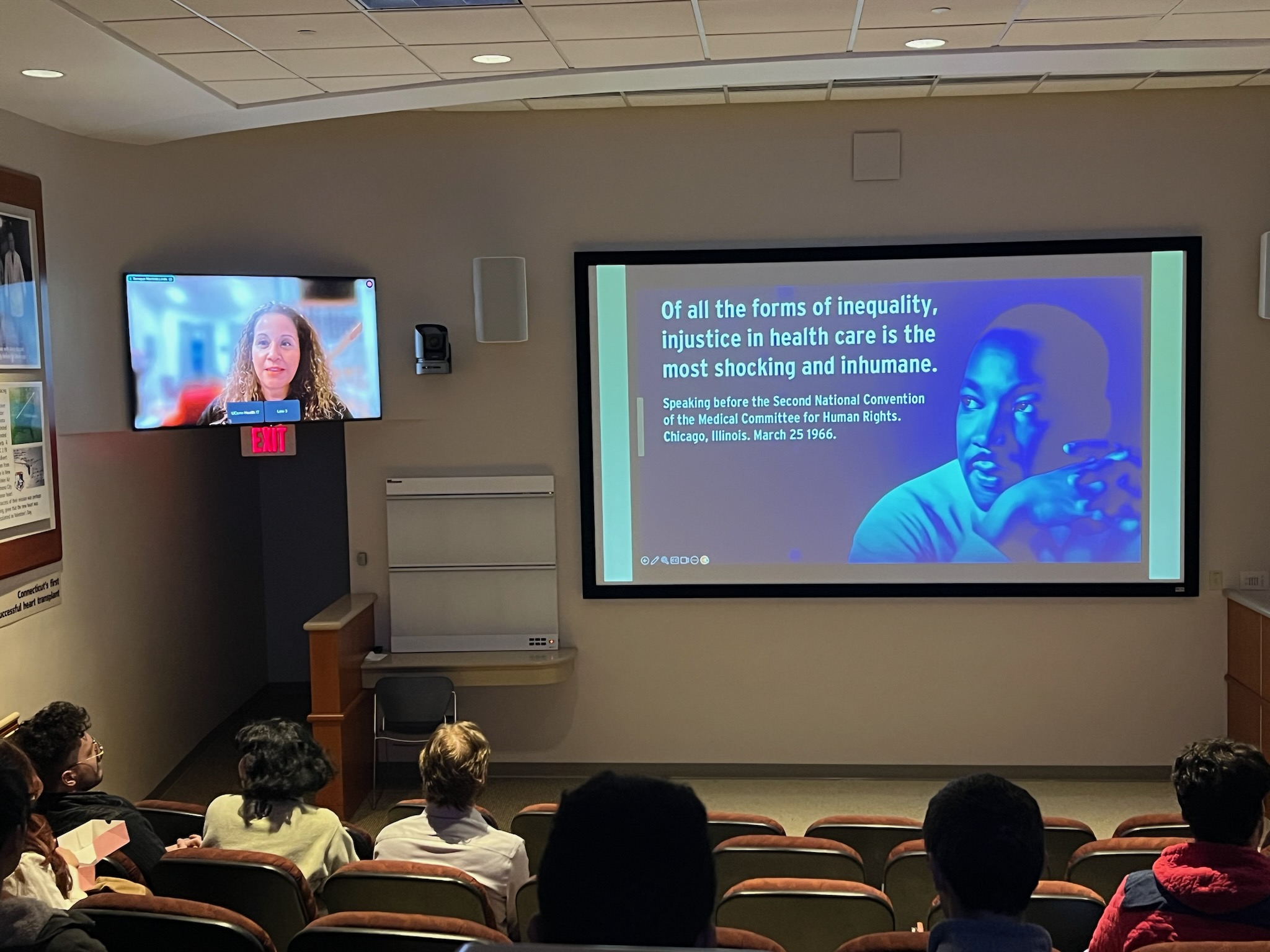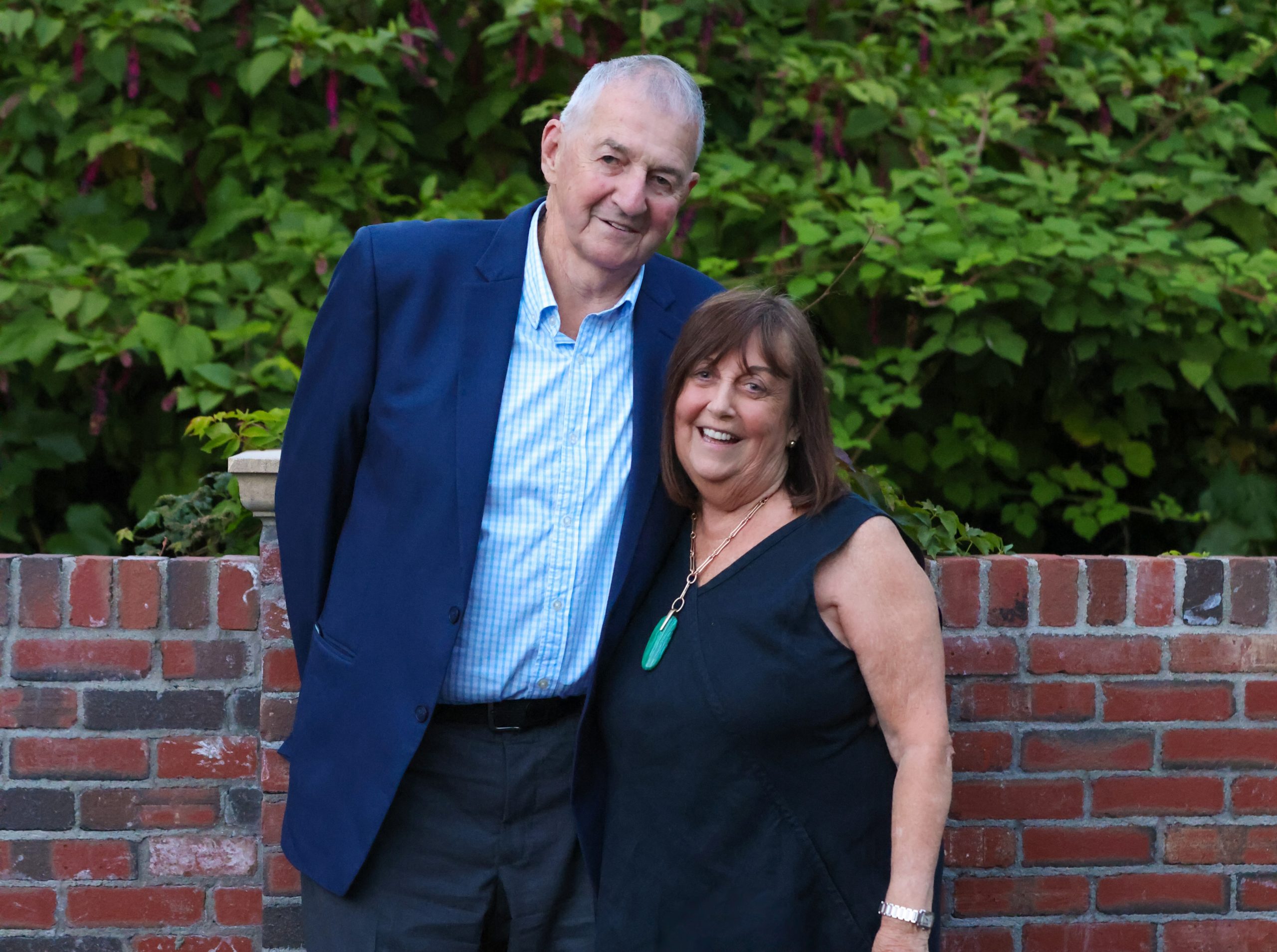This story originally appeared in UConn Health Journal.
They’d watched it coming. First as a strange outbreak in China … then in Southeast Asia … then in the state of Washington. It was like watching a tidal wave come in. And the team at UConn Health knew one thing: they weren’t going to let Covid-19 rage through their hospital like a tsunami on a beach.
As Covid-19 overwhelmed health systems around the world, infectious disease specialist Dr. Kevin Dieckhaus thought of resource-poor areas he had worked in before. Uganda. Haiti. In such places, situations arise where the number of patients can exceed resources available to treat them. That had never happened before in the U.S. And back in February Dieckhaus was keenly aware that some people couldn’t imagine it being otherwise. He was particularly worried that the 169-bed hospital might have to start consolidating patients into smaller spaces, with many per room, potentially even in the hallways.
By now, we’ve all seen pictures of this, mostly in hard-hit areas of New York City, where the virus hit early and the population density allowed it to spread rampantly. But early this year, before cases of the virus were confirmed on the East Coast, that possibility was merely a nightmare vision in his mind. He resolved that he would not let that happen at UConn Health.

“I’ve been in cholera units. There’s one way in, one way out. You must disinfect yourself in bleach on the way in and out. That’s not ingrained in the American way,” where the room of a patient with a dangerous infectious disease is treated as a special zone unto itself, Dieckhaus says. But he knew that was what they’d need to do in order to keep staff and patients safe. He was worried his colleagues wouldn’t like it — generally in these contained units, you go in at the beginning of your shift and don’t leave until the end, in order to minimize the risk of disease transmission and conserve personal protective equipment (PPE). You can’t eat lunch, or go to the bathroom to relieve yourself, or even scratch your nose.
But such a unit would be critical to ensuring staff and patient safety and to minimize the risk of running out of PPE. Before the hospital had seen a single patient with the new coronavirus, Dieckhaus began campaigning for a biocontainment area for patients with Covid-19.
“I’m the guy running around saying, ‘The sky is falling!’” Dieckhaus says. He was worried that the hospital administration and the other doctors and nurses would think he was overreacting.
But the hospital administration listened to him. And he found a powerful ally in Director of Construction Services George Karsanow.
TO THE DRAWING BOARD
Karsanow’s role is to oversee all planning, design, and construction at UConn Health. He directs a team of architects and managers and was already familiar with the fine points of infection control in a hospital.
“Believe it or not, we do things similar to biocontainment zones all the time. You have to protect the other areas of the building from whatever is occurring in your construction zone. It’s normal in a hospital,” Karsanow says. Covid-19 was much more serious and sensitive than the usual infection risks they encountered, but the basic practices would be the same.
First, they had to identify where to draw the line between clean and contaminated. Sometimes that line would require walls and doors to block airflow; sometimes it could just be a literal line on the floor. The second step was to put procedures in place to contain the contamination. For example, staff must wear PPE, so the team, which included the Facilities and Maintenance group, created donning stations at the entrance to the biocontainment zone and doffing stations at the exit. The doffing stations were elaborate, with a regimented series of steps at different locations, ending with a final hand washing, that had to be done before staff could be considered clean.

The most complex part of the process was that the biocontainment zone had to be dynamic, able to expand or contract along with the number of patients. The planning team, which eventually included doctors, nurses, and administrators as well as members of facilities operations and campus planning, design, and construction, had to come up with multiple scenarios.
Blueprints had to be drawn for each one. Karsanow drew countless versions of the hospital floor plan, sometimes drawing several in the same weekend.
“When we started back in March developing surge plans, we had no idea what to expect. We were assuming the worst; could we go from a 169-bed hospital to a 500-bed hospital?” How do you do that while maintaining service to other essential areas such as the dialysis center? These were the puzzles Karsanow and the rest of the team had to solve.
Airflow, in particular, was a limiting factor. Normally, the HVAC system is set up to blow air out of patient rooms, to protect them from any germs that might be floating in the hallway air. But for Covid-19 patients, that had to be reversed; the rooms needed negative air pressure to avoid pushing virus particles into the hallway. Mechanical engineer John Lombardi, a director in Facilities Management and Operations, was able to arrange that airflow reversal, but because of the way the HVAC is set up, it had to be done for blocks of rooms, not individually. The team would run into conundrums: They might be able to have four Covid-19 rooms in this section, or nine, but if they had nine they would contaminate access to a critical location.
Initially they settled on a plan where half the ICU would be a biocontainment zone reserved for Covid-19 patients. Karsanow and the rest of the team built additional walls and doors so that if the patient count went up, they could easily convert the entire ICU into a Covid-19 ward. When that happened in early April, he had his team ready the pre-/post-operative recovery unit to serve. Thanks to the flattening of the curve, they haven’t had to use that section.
Karsanow walked the Covid-19 floors regularly in March and early April.
“I felt safe because I knew I was following the protocol,” he says.
‘THIS IS OUR CALLING’
ICU assistant nurse manager Crystall Coe, BSN, RN, puts on all her PPE at the beginning of her shift and enters the biocontained area to care for her patients. It’s hot, sweaty, and irritating to wear the PPE for many hours at a time, and many people are getting sore spots on the bridge of their nose and the backs of their ears. But it’s not so bad, she says. The nurses get to take two or sometimes three breaks during their shift, so they can use the bathroom if they need to and eat lunch. And in some ways the biocontainment zone makes her job easier; she doesn’t have to degown and regown each time she changes rooms. Normally ICU nurses work three 12-hour shifts a week, but during the pandemic those on UConn Health’s ICU team have all been working 12 to 24 extra hours.

“Every patient in the ICU now is in a life-or-death situation. This is our calling, and we’re doing what we need to do” to take care of them, says Coe. Even when the stress of taking care of such ill patients, and the sadness of seeing some of them die, makes everyone tense.
“We’re all a little grumpy, but at the end of the day we say, ‘I love you’ and keep going,” Coe says.
Out of the 5,022 workers at UConn Health, only 87, or 1.7%, had contracted Covid-19 as of June 10. Since there were no clusters of infection among employees working in close proximity, the team believes very few, if any, of the cases were acquired at work. The biocontainment zone and the protocols developed by Dieckhaus, Karsanow, and the rest of the Covid-19 surge preparedness team are largely to thank.
And yet in the back of his mind, Karsanow worries, not about the quality of his infrastructure and protocols, but about people.
“I worry people won’t have infinite patience to do this. At some point, something’s going to break down,” he says. Not necessarily in the hospital, but in society. Already people are tiring of self-isolation and quarantine. There will be second and third waves of Covid-19 patients, according to models run by UConn Health researchers. But as long as there’s a need, the walls and doors and contamination containment system will be ready.
“When you see the doctors and nurses going in to treat the patients day in and day out … you have to trust that the protection you’re using is going to work. You move forward and do your job,” Karsanow says. “You can’t run away.”
Read the summer 2020 issue of UConn Health Journal.



